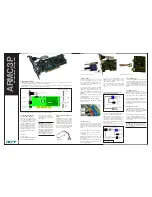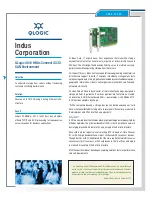
AT Command Manual
v1.5
©2013 LM Technologies Ltd
www.lm-technologies.com
Page 23 of 26
2.10
Bluetooth Security Changes
Note:
Bluetooth security had significant changes and improvements in BTv2.1 specification. The most
noticeable change was introduction of Secure Simple Pairing during authentication (also known as
pairing) of Bluetooth connection between two Bluetooth v2.1 complaint devices.
This section is only applicable for v6.17 firmware version running on LM780/LM400/LM072
module hardware.
The authentication (also known as pairing) between Bluetooth 2.1 and Bluetooth 2.0 device will use
4-8 digit pin code (also known as legacy pairing). However, different security methods are supported
during authentication between two Bluetooth 2.1 devices. The security method used will depend on
the type of devices involved in authentication.
2.10.1
Bluetooth 2.1 Security Methods
There are basically 3 security methods supported in Bluetooth 2.1 authentication process:
2.10.1.1
Just works
This method is used by devices with limited input or output capabilities such as Bluetooth
headset with no display no keyboard interface. The two Bluetooth 2.1 devices create
authentication keys without any input/confirmation/interaction from the user. However,
few Bluetooth devices may prompt the user to confirm the pairing process. This mode is
more secure than the fixed PIN mechanism which is typically used for legacy pairing
(Bluetooth 2.0 pin code pairing) by this set of limited devices. This method provides no man
in the middle (MITM) protection.
2.10.1.2
Numeric comparison
This method is used in a scenario where both Bluetooth 2.1 devices have a display and at
least one can accept a binary Yes/No user input. This method displays a 6-digit numeric code
on each device. The user should compare the numbers to ensure they are identical. If the
comparison succeeds, the user(s) should confirm pairing on the device(s) that can accept an
input. This method provides MITM protection, assuming the user confirms on both devices
and actually performs the comparison properly.
2.10.1.3
Passkey Entry
This method may be used between a device with a display and a device with numeric keypad
entry (such as a keyboard), or two devices with numeric keypad entry. In the first case, the
display is used to show a 6-digit numeric code to the user, who then enters the code on the
keypad. In the second case, the user of each device enters the same 6-digit number. Both
cases provide MITM protection.
2.10.2
Security Options
The security options include configuration of local device input and output capabilities as well as
MITM protection requirements. These security options are exchanged between the local Bluetooth
2.1 device and remote Bluetooth 2.1 device to select appropriate security method for authentication
process. The local device capabilities can be configured in 4 ways:





































